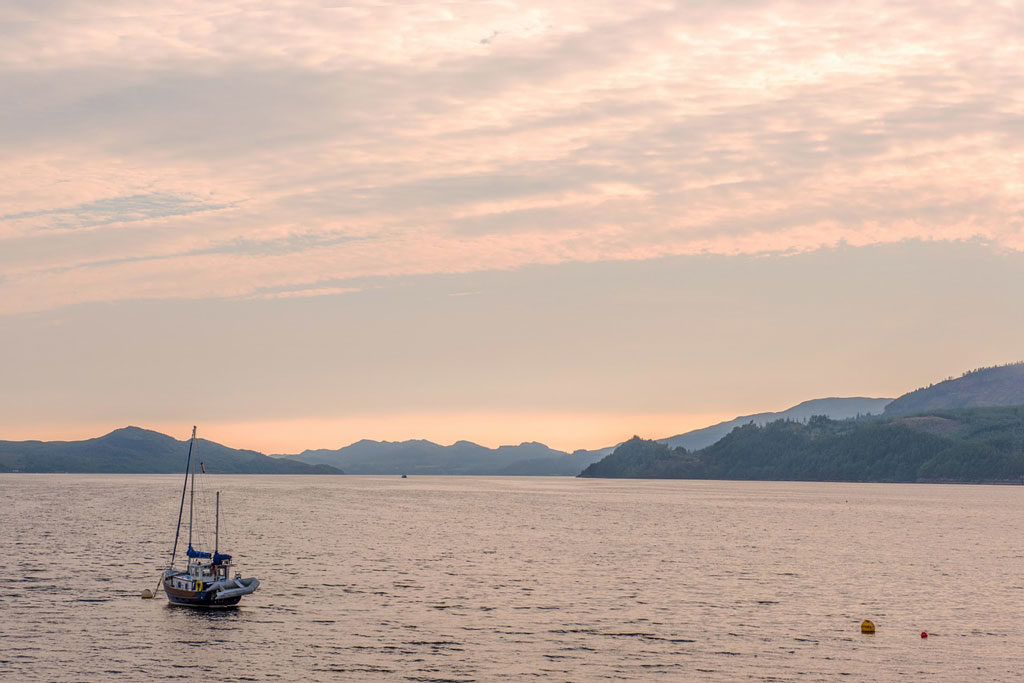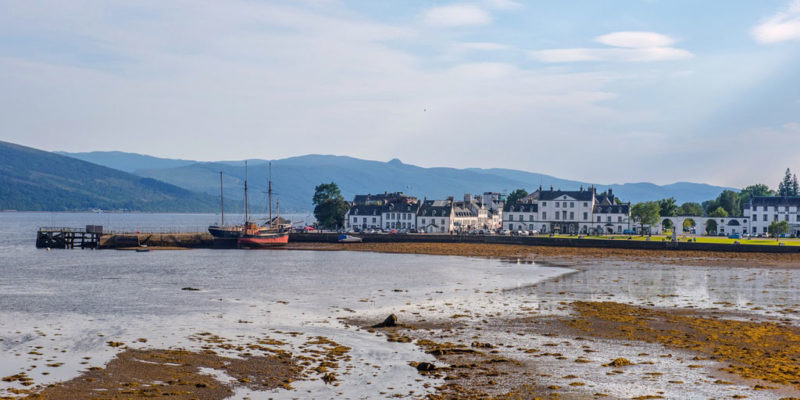Dominic Roskrow considers how the stunning region of Argyll and the isles has played a role in modern Scotland’s development.
MORE FROM SCOTLAND MAGAZINE
In a country blessed with more than its fair share of natural beauty, the region that makes up Argyll and its Isles is, to many, the jewel in the crown.
Characterised by lochs, sea and mountains, Argyll has a timelessness and variety about it that makes it like no other part of Scotland. And that sheer diversity, breathtaking as it so often is, makes it difficult to categorise.
It is made up of complicated sea passages, a swathe of islands and fjord-like landscapes where the sea and mountains meet. Most of the mainland of Argyll is above the line that defines where the Highlands start but Argyll is easily reached from the lowland areas close by.
It is an area bound mainly by the fact that you’re best travelling through it with time on your hands. And what other way would you want to approach a region so rich in beauty?
The diversity of the area has another effect, too; it gives the area a lack of focus. At times the scenery is such that you could be sailing in Norway, in others you could be in the Alps. But despite this lack of a definite regional character, Argyll has had a major part to play in history, from the earliest years to the present.
Argyll and the Isles is made up of the western mass of land stretching up to Glencoe in the North and down as far as Bute and Kintyre. It includes the whisky isles of Islay and Jura as well as Mull, Iona, Tiree, Coll, Colonsay and Gigha.

Inverary, situated on the mighty sea loch Loch Fyne is at its heart, Oban is the gateway to the islands, and other towns include Campbelltown in the South and Rothesay and Dunoon on its Eastern side.
Just looking at the region on a map gives you a sense of the difficulty in travelling through the area, with dark mountains and vast masses of water cutting through it in every direction.
The region plays a unique role in the development of Scotland from its very beginnings through its bloody history and up to the present day.
The area is punctuated by archaeological remains from its earliest history. The world famous chapel on Iona, for instance, could not provide a more evocative reminder of the long history here. And throughout the region there is evidence of the rich clan heritage of the area, and to seek out where some of the roots of great Scottish families are found.

Argyll provides a marker for some of Scotland’s earliest history. Kilmartin valley in mid Argyll contains a concentration of cairns, standing stones and other prehistoric remains dating back to 3000 years BC. Many can be visited, and the museum at Kilmartin provides interpretation for these.
Here, too, are the roots of modern day Scotland. From AD 500 the Scottish arrived here from Ulster, bringing with them the Christian faith, and formed the kingdom of Dalriada. They made a hill fort at Dunadd as their first capital, and enlarged their political and spiritual kingdom with the assistance of St Columba and the infant Celtic church.
In AD 843 Dalriaden King Kenneth MacAlpine became the first King of Scots (and Scotland). To this time the power base of the area had been based at Iona, but with the triumph of MacAlpine, power moved out of Argyll, and the area was increasingly ravaged by Norse invasions. The introduction of Catholicism was to see the end of the dominance of the Celtic church in Scotland.
The regular incursions from the Norsemen were to have their own effects on the development of the area, however. They saw it as an extension of the Norwegian kingdom initially, but eventually it led to the creation of the Lordship of the Isles under Somerled.
From the 12th century stone castles started to appear, built both by descendants of the Norse invaders and for the Stewarts. Castle Sween is an example of the former, for instance, while Rothesay Castle represents the latter.
The Lordship of the Isles, first with Somerled and then through successors from the MacDougalls and MacDonalds, became a threat to the Scottish Crown. Castles built in the following 200 years reflect the ever-changing power bases and battle for political dominance. The support for Robert the Bruce from both Clan Donald and from the more obscure Campbells of Lochawe led to the enhancement of both families at the expense of the MacDougalls.
The climax in Argyll of the recurring clan power struggles came in the 17th century. The spilling of the ‘English’ Civil war in the 1640s led to the taking of sides. Clan Campbell was mauled but took out age old rivals the Lamonts and to some extent the MacDonalds. Despite everything, Clan Campbell remained the dominant force.
The Jacobite uprisings in 1715 and 1745 included considerable clan support from the Argyll region, but was to ultimately lead to the break up and ending of the clan system. By the late 18th century the region was no longer a political force, but was slowly starting to become a tourist one.
The later 18th century saw the start of the period that would see the growth of the country house in the region, and this growth has pretty much continued ever since.
Inverary Castle had all but begun the romantic interest in reviving or playing with historical styles and such properties, often built by rich incomers, were to dominate in the next 150 years.
Examples in the region abound; Torosay, Gelngorm, Kilberry and Ardkinglas were all built in Scottish baronial style; Torrisdale, Calgary and Minard were in castellated style; Glenbarr impersonated an abbey-turnedmansion, and Poltalloch – now a ruin – was designed in Jacobean style.
The early 20th century saw a further development in the area that was to help develop the ever-growing tourist trade in the region.
Resorts had developed along the Clyde, and although the area was hit badly by the two world wars and by the growth of cheap holidays, the rapid rise in car ownership gave Argyll a welcome boost.
Bus holidays have, for many parts of Argyll, brought the phenomenon of drive-through tourism, but the development of self-drive holidays has counteracted this. In turn a thriving bed and breakfast industry has developed in the region, and there are scores of reasonably priced and perfectly acceptable places for overnight accommodation.
To do a visit to the area justice, it is essential that at least some of the isles are visited.
For all its unhurried ways, modern day Argyll is forward-thinking and progressive. An awareness of history and heritage remains a local characteristic, and Gaelic remains the language of some of the islands.
But it is an accommodating area, openly welcoming the tourists who flock to see its beauty. It remains as it will always be, an area that can never be visited enough. And for many, it is the finest part of the finest country: a land whose variety can never become anything short of stunning.
Special thanks to Gilbert Summers and Colin Baxter, and their book Argyll & the Isles.
MORE FROM SCOTLAND MAGAZINE

SCOTLAND MAGAZINE
Published six times a year, every issue of Scotland showcases its stunning landscapes and natural beauty, and delves deep into Scottish history. From mysterious clans and famous Scots (both past and present), to the hidden histories of the country’s greatest castles and houses, Scotland‘s pages brim with the soul and secrets of the country.
Scotland magazine captures the spirit of this wild and wonderful nation, explores its history and heritage and recommends great places to visit, so you feel at home here, wherever you are in the world.